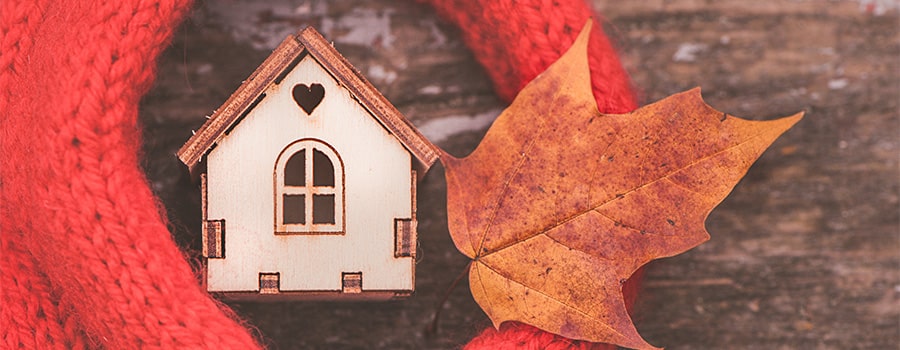
A Practical Guide to Insulating Your Home on a Budget
09/11/2018
Maybe you have read or heard many times before about how important it is to insulate your home. Yes, it’s true – insulation is a crucial step in the process of building a new home or improving the existing one.
If your house wasn’t insulated well during the construction process, the chances that you are losing loads of energy each year are good, and that explains your higher electricity bills. Except that, insulation also helps in maintaining the comfortable living environment, it can minimize condensation, and it helps to reduce your carbon footprint.
If your home has a built-in-insulation, that’s really great! If not, then don’t worry because there are many ways to save some energy without blowing your budget. Keep reading to discover great ways to improve the efficiency of your insulated or not so insulated house.
1. Seal the Air Leaks
When air leaks are found in your home, heating or cooling takes up much more energy whether your home is insulated or not.
Weatherstripping, chalk, and sealant are inexpensive ways to seal those air leaks. Draught usually occurs around the doors and windows. Air leaks can also be found in areas where there are cracks in the walls, which can be plastered over cheaply.
Furthermore, you can insulate your single glazed windows with double glazing film if your budget does not allow the installation of doubled glazed windows. A draught excluder can stop the air underneath your doors, and you can even make your own with some spare fabric.
Keep in mind that by closing the doors of the spare rooms which are not being used, you will minimize draughts and it will take less energy to heat or cool the rest of the house.
2. Use Home Décor to Insulate
When decorating your home, try to keep energy-efficiency in mind as well. For instance, if you buy some curtains with a thermal backing, they will add more warmth to your home. By closing blinds or curtains when it gets dark, you can create a form of insulation by trapping in warm air and preventing draughts.
Another great way to make your home cozier is to add some rugs which are an excellent way to minimize those draught seeping through the wooden flooring. You can even use chairs and sofas to reduce leaks by placing them in drafty areas. Don’t be picky; anything dense enough will serve as an excellent thermal barrier.
Another simple decor fix for warming up your walls are wall tapestries. The heavier and denser the material, the more efficient it will be.
3. Maintain Your Heating and Cooling Units
Maintaining your AC units can make a significant change in their performance. The best thing about maintenance is that you can do almost all work on your own, for free.
Air can leak from your heating and cooling system as well, making them less efficient. Use the ductwork to seal leaks and remember that by bleeding the radiator, it will allow trapped air to escape, making it more efficient when heating.
Removing debris can make a significant change in how your AC unit works. You can easily remove the cage from the exterior condenser and use a vacuum to clean leaves and debris.
Besides all listed, replacing the blow filter at least twice a year is a must. However, if you live in a dusty area, you should change it more often. Keep in mind that your new filter has to have the same airflow rating.
4. Insulate the Attic
Insulating your attic is not that difficult, and with the right materials, it can be quite cheap. Two most often types of attic insulation are loose fill or batt.
Loose fill options refer to insulation fibers packaged and blown in place. That requires special machinery which allows you to build insulation to wanted depth and density.
More popular and simpler option is batts which come in rolls. Packaged rolls come in a broad range of standard thickness. They are simply rolled out and come with foil that acts as a vapor barrier. If you want a higher level of insulation, you need to add another layer.
If you have the time, you can insulate your attic yourself by purchasing fiberglass wool or reflective foil and merely covering all the open areas under your roof.
5. Warm up Your Walls
If you have areas in your home where the walls are cold, opt for a drywall cover. The process will include building drywall over the “cold wall,” which is relatively easy. One option is to add glass wool to the wall and cover it with plasterboard. This is an excellent fire-resistant-insulator and soundproof as well.
Overall, when choosing insulation materials, it is best to select recycled materials to help your budget stretch further. Products like blue jeans or paper can be less expensive, depending on the company and the brand of course.
If you are lucky, maybe you can get a grant from your local utility company when you decide to upgrade your insulation. Specific homes might also be eligible for tax credits when making energy-efficient changes which are another great reason why insulating your home is not a bad idea.
With that said, there is no doubt that insulation will make your home more energy-efficient. Insulating your home goes far beyond the actual insulation products themselves. You can have a fatter bank account and a more comfortable home by merely applying these tips.
